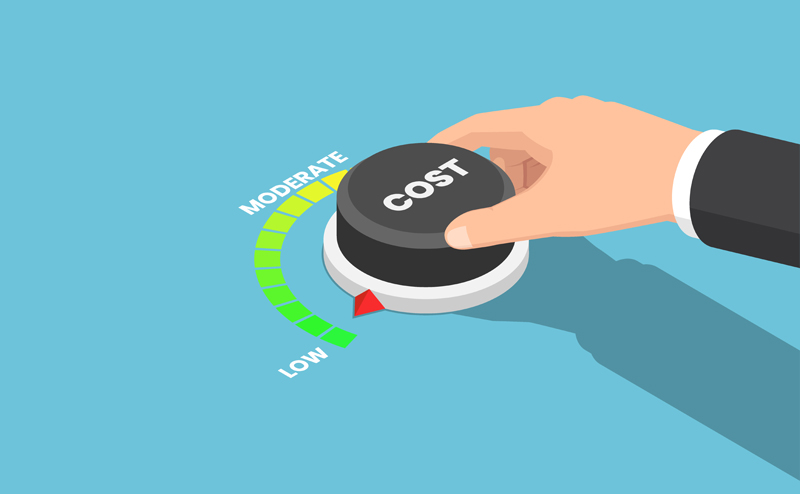Present-day marketing is becoming more about benchmarking customers with the help of cleansed and enriched data. With applications in Artificial Intelligence and Machine Learning, data on the target audience is not only being mined accurately but also being used to predict how they will react to business offerings in the future. Data and technology together are changing the marketing landscape rapidly by helping marketers design personalized experiences for consumers throughout their buying journey.
While the idea behind running a data-backed marketing campaign seems neat, in practice, it can be intimidating. Why? Firstly because the business must be able to acquire clean and accurate customer data that includes phone numbers, email addresses, etc., and secondly, they must ensure that it is continuously appended.
What Is Email Appending?
For starters, the word append simply means, “to add to something”. Therefore, adding email addresses to your existing database completes the process of email appending. Your database may already have categories like names, ages, phone numbers, and can simply be missing email addresses.
The process of email appending most often involves matching and merging email data from a third-party vendor like Span Global with your company’s pre-existent database. A successful exercise in email appending depends on the individual quality of the two merged data sets. When you run your email database against an external one, you get more up-to-date information about your customers.
What Is Reverse Email Appending?
Unlike email appending, reverse email appending refers to using your current client email data and cross-referencing it against the data offered by a third-party vendor to gather full names, postal addresses, phone numbers, etc. of your potential clients.
Simply put, email appending helps add missing email addresses to your database. Whereas, reverse email appending allows you to leverage the emails you already have to gather other personal information like phone numbers, addresses, etc., of your customers.
Why Is Email Appending Important?
A study by Marketing Sherpas concludes that your email database decays at an annual rate of 22.5%. This means that a major chunk of said data becomes obsolete, thus producing unusable or invalid information. The use of such data for email marketing can generate more spam reports against your brand. Emailing clients with offers continues to grab the top spot for being the most effective channel for higher ROIs on marketing. And, appending your data is the only way to stay current on who your clients are, and how to engage them? Listed below are a few key benefits of continuously appending email data –
Reduce Marketing Costs

Regular email appending drives up web traffic, thus reducing marketing costs. It also substantially increases the effectiveness of your marketing campaigns as you get to interact with active clientele that are more likely to read about your business offerings and engage with them.
Protects Brand Reputation
Email appending ensures that you comply with the worldwide anti-spam law. If you don’t append your email database, how do you know whether a potential client wishes to opt-in or opt-out of email communication?
Increases Conversion Rates
Appended email lists translate to quality customer data. Sending out personalized emails to active potential clients leads to a higher campaign response rate that can surely increase your brand’s overall sales and revenue.
Improves Customer Care
An appended email list contains information on customers that are fine with receiving marketing emails. Now it is up to your brand to add value to their experience through targeted and personalized communication.
Improves Time Management

Procuring relevant email addresses for refreshing your database is a laborious task that will eat into your precious man-hours. Third-party vendors like Span Global can save you time by providing a ready and relevant email list that ensures you don’t have to delay any marketing campaigns.
What Are the Best Practices for Email Appending?
No matter how reputed a B2C or a B2B email appending service provider is, things can go wrong if you don’t handle the process of appending emails properly. This list of best practices talks about what comes before, during, and after email appending.
Choose Your Email Appending Service Provider Carefully
Sign up with a reputed service provider. How do you decide? Follow the pointers listed below for choosing a third-party vendor –
- Check out their client list. You can do this by logging on to the merchant’s website or by directly asking them. Get in touch with one or two of their previous clients and ask for references
- If a service provider is giving out appended lists for an extremely low price, stay wary of them
- Get your top-level management involved. Ask them to do thorough research and ask around for names of prospective third-party vendors
Share Only Customer Information
Understand that you will have to share your contact database with a third-party vendor for the appending process. This is a sensitive issue. Therefore, make certain that your teams send out the list of solely your customers or of people who have willingly provided their details whether online or offline. Simply put, share customer information and not prospect details when sending out your database for email appending.
Carefully Design the Welcome Email
Sending out a welcome email to the customer list by either you or your third-party vendor is the first point of contact. Think of this exercise as verification of sorts. Usually, the service provider sends the aforementioned email. In this case, draft a welcome email keeping with the tone of your brand and send it to the service provider. The welcome email is purely to introduce or re-introduce your brand and seek opt-in and opt-out permissions from clients. Do not market any business offering through this email. This email must have the following set of options to make it more efficient –
- The subject line must carry your brand’s name
- The message must be warm yet crisp. Nobody has the time to read a lengthy welcome email
- Give out your contact details
- List the opt-in or opt-out option for further communication with your brand
Keep the In-house List Separate from the Appended List
Make sure to keep the newly appended list separate from your in-house list. Ultimately, you can merge them depending on the reaction you receive as a response to your welcome mail. This separation will ensure that your emails don’t bounce in the future. Also, ask your third-party service provider to share the source of the email to avoid any future problems. The number of complaints and warnings generated should become very low once the list is appended.
Over to You
Email appending, if done right, is a powerful tool giving marketers access and insight into their clients’ psyche. Don’t limit the potential of your campaigns based on the size of your old email database. If you haven’t yet considered email appending, go for it before it’s too late.


